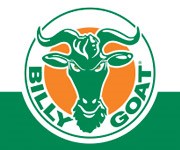The Demske Sports Complex sits on a campus nestled in the established Hamlin Park neighborhood on the east side of Buffalo. The facility is home to hundreds of field-sport events on an annual basis. The outdoor complex is adjacent to the Koessler Athletic Center at the corner of Main Street and East Delevan Avenue. Between the two, the Demske Sports Complex and the Koessler Athletic Center provide the outdoor and indoor “home base” to support twenty Division I teams, as well as dozens of club teams, intramural sports, physical education classes, and local high school and youth sporting events.
When it was built in 1989, it was hailed by the New York Times, USA Today, and the NCAA News as a model for urban campuses with limited space. The facility maximized use of space and is an unbelievably valuable part of the Canisius College experience. Remarkably, all of the activities are conducted on fewer than five acres of land, including two conveniently located parking lots. The L-shaped property is bordered by an urban neighborhood, a vital classroom building that sits on a side street, and bustling traffic on two heavily traveled city thoroughfares.
The aforementioned thought leaders, including the generous Koessler family, who have numerous Canisius graduates and are multi-generational benefactors of the school, saw the need for the athletics center and donated generously to its construction in the late 1960s.
Meanwhile, James M. Demske, S.J., who was the president of the college for twenty-seven years, from 1966 to 1994, left an indelible mark in many ways, both academically and athletically. Under his administration, the institution’s endowment grew significantly; the school of business, renowned in the Western New York area, was also established.
Yes, Demske had a great business mind, and was a natural leader; he also loved sports, and—in typical Jesuit-leadership-fashion—knew that Canisius College would be far better with on campus athletics facilities than without. The Koessler Athletic Center was built on his watch, and the Demske Sport Complex followed some twenty years later, opening in 1989. The facility was named in his honor at the request of John Strauss, a 1961 graduate of the College who provided the leadership gift to make the outdoor sports facility a reality for Canisius.
In any major endeavor at any such institution, long-term planning must be supported and enhanced by sound decision-making day in and day out, year in and year out. One key decision for the success of the Demske Sports Complex was the very necessary commitment to synthetic turf. The combination of heavy use, diversity of sports, challenging climate, limited space, and Division I profile left no alternative, making synthetic turf a given for Canisius. The Canisius College decision makers chose to invest in a synthetic turf system that would deliver maximum value and performance, thus creating a scenario where the turf was a noted asset, a recruiting tool, a source of pride, and—over the course of time—budget friendly. Now, 2023, the Canisius thought leaders of this generation can rest assured that their most recent synthetic turf decision in 2008 was a job very well done.
While many turf systems limp into the latter years of their life, which is often under a decade long, the A-Turf Premier System that was built on campus in 2008 has already completed fifteen full seasons of soccer, baseball, softball, field hockey, lacrosse and so on. The A-Turf Premier System is anchored by the world’s best fiber design, called the parallel-long-slit fiber. It’s known as the industry workhorse. This fiber plays true in every sport, from the roll of soccer balls to the bounces of baseballs. It also holds its rich color beautifully and resists the wear and tear from the weather elements, including the snow removal process that the Buffalo area is known for, as well as the intensity of foot traffic during high level competition.
Simply put, all turf systems do not hold up equally. For fifteen seasons, Canisius College and A-Turf have operated in close partnership. Bolstered by the world’s most proven fiber, a highly utilized, trouble-free turf system rested quietly at the corner of Main Street and Delavan Avenue. Through winter storms, spring thaws, and summer heat, the seldom talked about A-Turf Premier System performed without further ado. That’s a big win for a deserving private college like Canisius where long term planning and sound operational planning work hand in hand.










